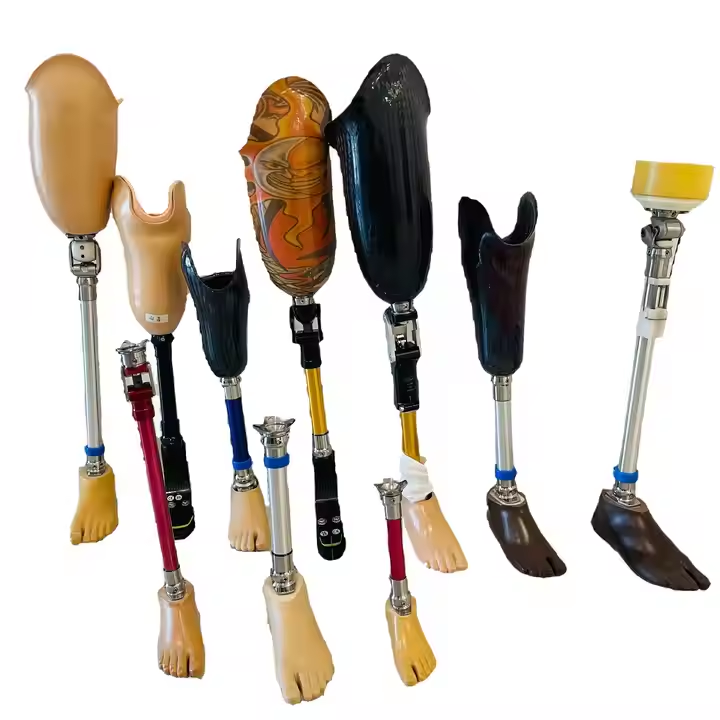Understanding Prosthetic Leg Knee Prosthesis in the Biopharmaceutical Industry
Release Time:
Feb 23,2024
Prosthetic leg knee prosthesis plays a crucial role in the field of biopharmaceuticals, offering a solution for individuals who have lost a lower limb due to injury, disease, or congenital limb deficiency. These innovative devices are designed to restore mobility and functionality, allowing users to lead a more active and independent lifestyle. One of the key components of a prosthetic leg is the
One of the key components of a prosthetic leg is the knee prosthesis, which serves as the pivotal point of movement and stability. There are different types of knee prostheses available, including mechanical, hydraulic, and microprocessor-controlled knees, each offering unique features and benefits to the user.
Mechanical knee prostheses are the most basic type, relying on the user's movements to control the knee joint. These are often more affordable but may lack the advanced functionality of other types. Hydraulic knee prostheses use fluid dynamics to mimic natural knee movements, providing a smoother and more natural gait for the user.
The most advanced option is the microprocessor-controlled knee prosthesis, which utilizes sensors and a microprocessor to adapt to the user's walking speed and terrain, offering a more responsive and intuitive experience. These high-tech prostheses can significantly improve the user's quality of life by reducing the risk of falls and enhancing overall comfort and stability.
In recent years, the biopharmaceutical industry has seen significant advancements in prosthetic leg knee prosthesis technology, with researchers focusing on improving durability, comfort, and functionality. 3D printing technology has also revolutionized the manufacturing process, allowing for customized prostheses that better fit the user's unique anatomy and needs.
Overall, prosthetic leg knee prostheses are an essential component of the biopharmaceutical industry, offering a lifeline to individuals in need of mobility assistance. As technology continues to evolve, we can expect even more innovative solutions to enhance the lives of those who rely on these devices for everyday activities.
Keywords:
You Can Also Learn More About Industry Trends
Mar 27,2024
The Evolution of Prosthetic Orthosis: Innovations and Advancements
Prosthetic orthosis, a field that has continuously evolved and advanced over the years, has seen remarkable innovations in technology, materials, and design. These advancements have revolutionized the industry, leading to more comfortable, functional, and personalized orthotic devices for individuals with diverse needs.
Mar 27,2024
Prosthetic Orthosis: Enhancing Mobility and Quality of Life
Prohetic orthosis, also known as orthotic devices, plays a crucial role in enhancing mobility and improving the quality of life for individuals with physical disabilities or injuries.
Mar 06,2024
The Ultimate Guide to Prosthetic Orthopedic Legs
Prosthetic orthopedic legs are advanced medical devices designed to help individuals regain mobility and independence after limb amputation. These artificial limbs come in various types, each tailored to meet the specific needs and preferences of the user. One common type of prosthetic orthopedic leg is the below-knee prosthetic, which is designed for individuals who have undergone amputation bel
Mar 03,2024
Innovative Designs: Prosthetic Leg Cosmetic Sponges for All Skin Types
**Introduction** In today's world of advanced technology and innovation, prosthetic leg cosmetic sponges have evolved to meet the diverse needs of individuals with limb differences. These innovative designs not only provide functional support but also cater to all skin types, ensuring a seamless blend with your natural skin tone. In this article, we will explore the latest advancements in prosthet

Building 58, Tianshan Community, Yuanshi County, Shijiazhuang City, Hebei Province
Phone/Whatsapp:
E-mail:
Main Business
Specializing In The Import And Export Trade Of Prosthetics And Orthotics Products
Find The Products You Need Quickly
Quick Navigation





